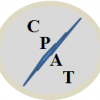Search the Community
Showing results for tags 'Sole-Source'.
-
All, When consulting FAR part 6, we find at 6.301 (b), "Each contract awarded without providing for full and open competition shall contain a reference to the specific authority under which it was so awarded. Contracting officers shall use the U.S. Code citation applicable to their agency. (See 6.302.)." We know that the authority for agencies outside of DOD, CG and NASA is located at 41 U.S.C. 3304. For example, FAR part 6.302-2 (unusual and compelling urgency) is cited as 41 U.S.C. 3304 (a) (2). My question concerns SAP. When using FAR part 13 procedures, at 13.106-1 (b) (1) (i) FAR states, "Contracting officers may solicit from one source if the contracting officer determines that the circumstances of the contract action deem only one source reasonably available (e.g., urgency, exclusive licensing agreements, brand-name or industrial mobilization)." This citation is for below SAT, once we reach 13.5 (above SAT), we are referred back to FAR part 6 for guidance. I have been looking through U.S.C. and cannot find authority for the text at 13.106-1 (b) (1) (i) added through the passing of FASA in 94. Question. Did FASA create a SS authority under SAT, that doesn't have to be referenced back to U.S.C. or am I just not finding it?
-
Situation: Simplified Acquisition (approx. $100k); a single manufacturer, a large business, makes an end product; that manufacturer has numerous authorized distributors (both large and small businesses) but also has its own branch that specializes in government sales; the government requires the specific product (usually because of compatibility with previously purchased equipment) At my old agency, we would award sole-source directly to the manufacturer to avoid doubling overhead and profit. The reasoning was that there was really only one source and a direct path to it was more favorable than dealing with a middleman. I am seeing some resistance to this strategy at my new office so I am curious how others handle the situation.
-
Is there such a thing as a FFP/O&A contract type? I need to try out the following logic and argument. A hypothetical company has a FFP prime contract for DoD aircraft operations and maintenance with a CPFF CLIN for engine overhaul. The engine overhauls for the last four years have been subcontracted out to Vendor A. To speed up turn around on the subject contract, Vendor B (a separate, designated, overhaul facility for Vendor A) is being sole/source selected to alleviate Vendor A’s capacity constraints across contracts. The best sole/source justification for selecting Vendor B instead of incumbent Vendor A appears to be a simple application of 6.302-3( (iii) at the prime level to meet customer requirements for turn-around. Because the aircraft is sold commercially, these engine repairs are deemed to be commercial. However, neither Vendor A nor Vendor B is willing to commit to a FFP contract without a clause covering its O&A material cost. For each engine repair, material drives anywhere from 60% to 80% of the overhaul price. Vendor B has proposed 10% of its “estimated”, average, engine overhaul price as a flat labor charge and an additional 10% for mandatory supplies, kits, and tests. The additional 80% of its “estimated” price is based on actual material prices for services provided to other companies in the last two years. Vendor B has proposed the flat labor charge and mandatory supplies, kits, and tests as FFP; and has proposed the material charges as O&A (to be individually determined for each engine overhaul with no ceiling price.) Originally, the company wanted to describe its subcontracts with Vendor A as being T&M. Two seeming difficulties with this are FAR 12.207( (1) and FAR 16.601(d). The reason FAR 12.207( (1) seems problematic is that the company was not regularly soliciting more competition on its engine overhaul subcontracts after Vendor A became the established service provider. The reason FAR 16.601(d) seems problematic was that the company did not establish a ceiling price for each engine overhaul. Now, the hypothetical company wants to describe its proposed subcontract with Vendor B as being FFP due to an estimated 20% being fixed with Vendor B’s flat labor charge and mandatory supplies, kits, and test. The commerciality of the engine overhaul and the O&A estimate (not ceiling) is mentioned in the analysis. Is there any regulation similar to FAR 16.102( that would further support this commercial contract without running into difficulties due to FAR 16.301-3( and the 60%-80% O&A portion of the contract?

.gif)



